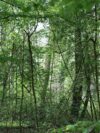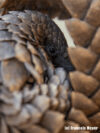Luangwa Giraffes
Luangwa Giraffes
The world’s tallest land-dwelling mammal is facing dramatically dwindling populations: In the last 30 years, the number of giraffes has dropped by more than 40 % to less than 100,000. In various African countries, the animals have already disappeared completely. Recent genetic studies suggest a split into four species. We work with the Luangwa Giraffe. Learn more below.
Explore our projects on giraffe conservation
Luangwa Giraffes – Profile
- Scientific Name: Giraffa ( Giraffa tippelskirchi thornicrofti )
- Size: Males: approx. 4-5.50 m, Females: approx. 3.50-4.50 m
- Weight: Males: approx. 970-1,400 kg, Females: approx. 700-950 kg
- Food: In the rainy season mainly foliage of deciduous trees (especially acacia), otherwise also the foliage of evergreen plants
- Number of offspring: Mostly 1 per litter, rarely twins
- Life expectancy: Approx. 25 years
- Range: Luangwa Valley in Zambia
- Habitat: Usually wide, open grass, bush or tree savannas, mostly near a rivers
- Population size: Less than 500
- Main threats: Habitat loss
Vulnerability status, threats and protection
Since 2018, the Luangwa, Thornicroft or Rhodesian Giraffe has been classified as Vulnerable on the IUCN Red List. The IUCN considers the population of 420 adults to be stable. There are no figures on population development but recent efforts aim to reassess the species status.
The conservation status of the Luangwa Giraffe appears to be fairly stable, however, it is a vulnerable sub-species due to its small population size,
Habitat destruction
Habitat conversion into agricultural and settlement areas and fragmentation may likely be one of the strongest impacts that can negatively impact the population of the Luangwa Giraffe. As agriculture becomes more intensive, humans are increasingly encroaching on the animals’ habitat and transforming savannah landscapes into fields and settlements or mining sites.
The Luangwa giraffe is found in only two protected areas, the South Luangwa and Luambe National Parks. However, there are recent reports of giraffes in North Luangwa National Park. The responsibility of these parks for the survival of the species is thus enormous.
Sources
(1) Emmett, Meghan; Pattrick, Sean (2013): Game Ranger in Your Backpack. All-in-one interpretative guide to the Lowveld. Pretoria: Briza. S. 64-69 (2)http://imperia.verbandsnetz.nabu.de/imperia/md/content/infopapier_giraffe__giraffa_camelopardalis_.pdf
(3) https://www.nabu.de/news/2017/06/22641.html
(4) https://www.wwf.de/themen-projekte/bedrohte-tier-und-pflanzenarten/giraffen
(5) https://onlinelibrary.wiley.com/doi/pdf/10.1002/ece3.4490



